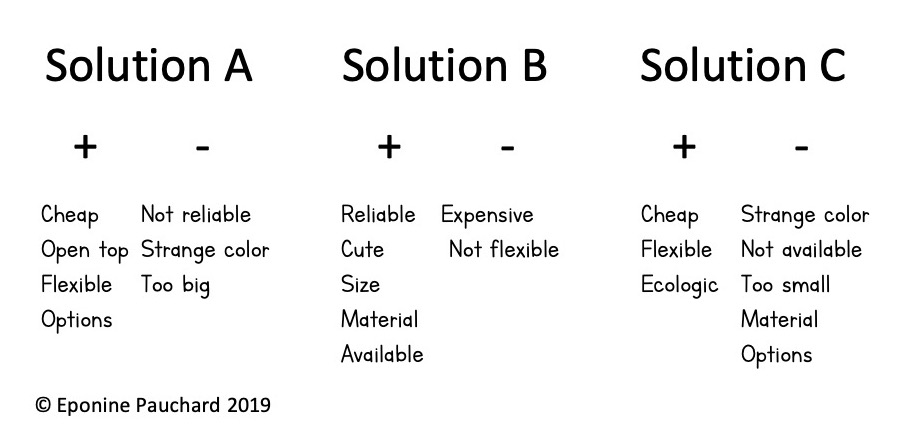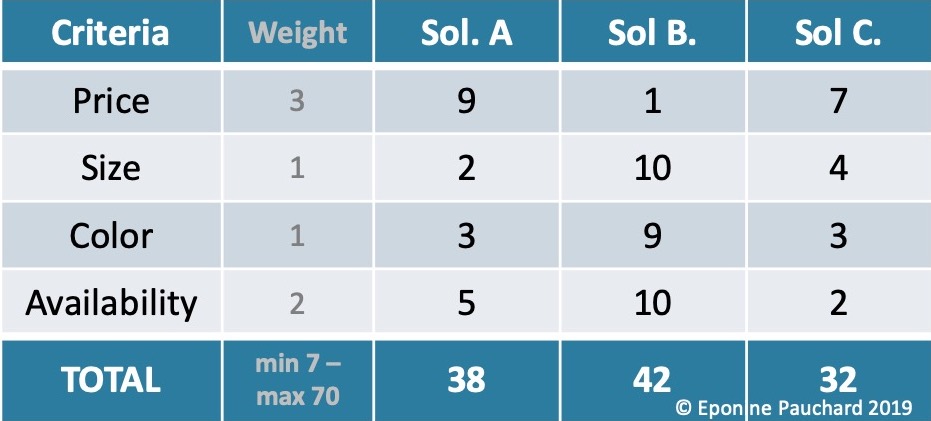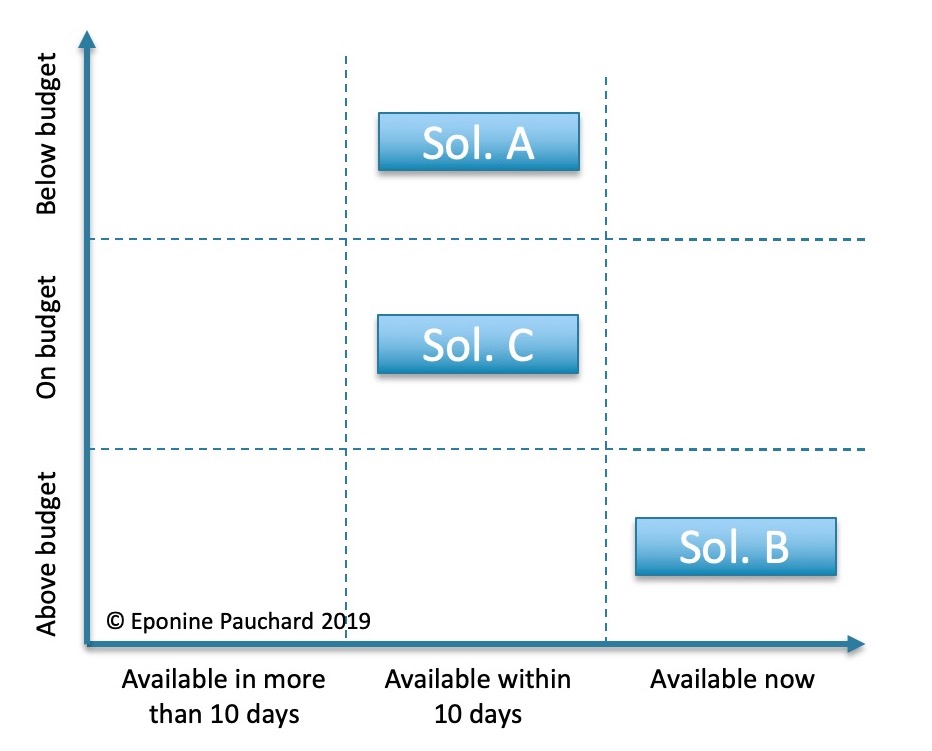Having a hard time choosing the right solution for your project? Don’t know what the right decision is? I share three methods for making decisions. They can be used both in professional settings and in your personal sphere, for decisions related to your life.
If you still can’t get along or decide, you still can use the traditional method and flip a coin. And when you have more than two options, using a die, you can easily decide among 6 solutions. Chance guaranteed!

The list of the pros/cons
It’s the simplest method. For each solution you will list the pros and cons. Often the advantages of one are the disadvantages of the other, so try to be creative and find different aspects.

To help you, you can use the 5 M’s: Machine (equipment), Medium (environment), Method, Material, Man (workforce), which it is also used for the fishbone diagram (Ishikawa).
If you make this list alone, it may be biased, as you surely have a preferred solution. As a team, the result is more comprehensive. On the other hand, as it is a qualitative method, consensus may take longer to obtain. With this matrix you have a lot of information. However, too much information can also block the decision-making process.
The weighted matrix
The weighted matrix can help you in this case. You will define the criteria with which each solution will be evaluated. Then you will weigh the criteria: are they equal, one of the criteria is more important? Then, you will give points to each solution for each of the criteria. Finally, by adding up the weights and score of each criterion, you will get a final score. The solution with the biggest score wins.

There are obviously different ways to decide weights and scores. You can work on your own and then average each person. Another option is to work as a team, with cards and display weights/score in groups. You can average/add or start again until you have a consensus.
To go further, you can check out the article on Wikipedia.
The big advantage is that with numbers, the choice becomes quantitative, so objective, on the other hand, the formula mathematics can quickly become complicated. Averages’ averages do not replace a frank discussion around a topic.
A 9-square matrix
To make it more dynamic, and simpler, you can use a matrix of nine boxes. You will therefore have only two criteria and three levels for each criterion. You will then place each solution in a box, following a team discussion.

With such a matrix, you limit the number of criteria. You compare the solutions between one another. As it is very visual, it is simpler than numbers in a table. On the other hand, you lose several dimensions and decision criteria.
When the decision is impossible…
Making a decision is never easy. There are different aspects to be evaluated. Dies or calculations can help you rationalize, but never forget the exchange and understanding of each person’s positions. Any decision must include the human component, because we are not machines…
If you focus on the method, the numbers and don’t listen to the teams, you risk making a bad decision. When discussions drag on, when everyone sticks to their positions, or when you feel that the subject is not being properly addressed, then you have to change your method.
In all cases, document the decision you have made and its context. Decision-making is difficult. It is much easier, afterwards, to judge and criticize. By documenting, you provide context to explain what happened. This will be useful for learning and making better decisions in the future.
